#plant science
Text
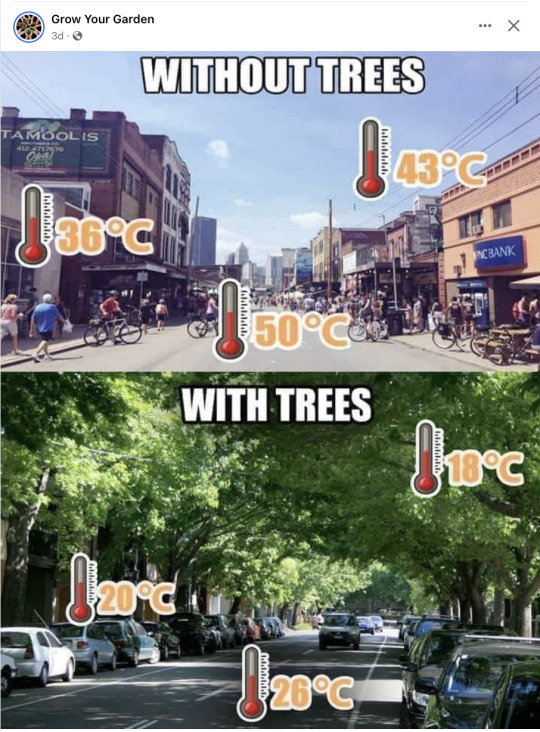
“It is not so much for its beauty that the forest makes a claim upon men’s hearts, as for that subtle something, that quality of air that emanation from old trees, that so wonderfully changes and renews a weary spirit.”
― Robert Louis Stevenson
Source: Grow Your Garden Instagram page
#katia plant scientist#botany#plant biology#plant science#plants#trees#plants make people happy#sustainability#ecological#solarpunk#intersectional environmentalism#environmentalism
2K notes
·
View notes
Text
"𝑁𝑜𝑏𝑜𝑑𝑦 𝑤𝑟𝑜𝑡𝑒 𝑡ℎ𝑖𝑠 𝑠𝑜𝑛𝑔. 𝑂𝑟, 𝑎𝑡 𝑙𝑒𝑎𝑠𝑡 𝑎 𝑝𝑒𝑟𝑠𝑜𝑛 𝑑𝑖𝑑𝑛'𝑡 𝑤𝑟𝑖𝑡𝑒 𝑡ℎ𝑖𝑠 𝑠𝑜𝑛𝑔. 𝐼𝑠 𝑖𝑡 𝑒𝑣𝑒𝑛 𝑎 𝑠𝑜𝑛𝑔?𝑤𝑒 𝑚𝑎𝑑𝑒 𝑡ℎ𝑖𝑠 𝑑𝑒𝑣𝑖𝑐𝑒 𝑡𝑜 𝑟𝑒𝑎𝑑 𝑒𝑙𝑒𝑐𝑡𝑟𝑖𝑐𝑎𝑙 𝑠𝑖𝑔𝑛𝑎𝑙𝑠 𝑜𝑓 𝑝𝑙𝑎𝑛𝑡𝑠 𝑎𝑛𝑑 𝑡𝑟𝑎𝑛𝑠𝑙𝑎𝑡𝑒 𝑡ℎ𝑒𝑚 𝑖𝑛𝑡𝑜 𝑠𝑜𝑢𝑛𝑑. 𝑇ℎ𝑒 𝑝𝑎𝑟𝑎𝑚𝑒𝑡𝑒𝑟𝑠 𝑤𝑒 𝑐ℎ𝑜𝑠𝑒 𝑡𝑜 𝑟𝑒𝑝𝑟𝑒𝑠𝑒𝑛𝑡 𝑡ℎ𝑒 𝑑𝑎𝑡𝑎 𝑎𝑟𝑒 𝑏𝑎𝑠𝑒𝑑 𝑜𝑛 𝑚𝑢𝑠𝑖𝑐 𝑡ℎ𝑒𝑜𝑟𝑦, 𝑏𝑢𝑡 𝑡ℎ𝑒 𝑜𝑢𝑡𝑝𝑢𝑡 𝑓𝑟𝑜𝑚 𝑡ℎ𝑒 𝑠𝑦𝑠𝑡𝑒𝑚 𝑎𝑛𝑑 𝑡ℎ𝑒 𝑠𝑒𝑞𝑢𝑒𝑛𝑐𝑒 𝑜𝑓 𝑛𝑜𝑡𝑒𝑠 𝑡ℎ𝑎𝑡 ℎ𝑎𝑝𝑝𝑒𝑛 𝑎𝑟𝑒 𝑠𝑜𝑚𝑒𝑡ℎ𝑖𝑛𝑔 𝑤𝑒 𝑐𝑜𝑢𝑙𝑑 ℎ𝑎𝑣𝑒 𝑛𝑒𝑣𝑒𝑟 𝑝𝑙𝑎𝑛𝑛𝑒𝑑. 𝐼𝑡'𝑠 𝑠𝑖𝑚𝑖𝑙𝑎𝑟 𝑡𝑜 𝑎 𝑤𝑖𝑛𝑑 𝑐ℎ𝑖𝑚𝑒. 𝑌𝑒𝑠, 𝑡ℎ𝑒𝑟𝑒 𝑎𝑟𝑒 𝑎 𝑓𝑒𝑤 𝑛𝑜𝑡𝑒𝑠 𝑎𝑣𝑎𝑖𝑙𝑎𝑏𝑙𝑒 𝑡𝑜 𝑏𝑒 𝑠𝑡𝑟𝑢𝑐𝑘 𝑜𝑛 𝑡ℎ𝑒 𝑐ℎ𝑖𝑚𝑒, 𝑏𝑢𝑡 𝑤ℎ𝑜 𝑖𝑠 𝑤𝑟𝑖𝑡𝑖𝑛𝑔 𝑡ℎ𝑎𝑡 𝑚𝑢𝑠𝑖𝑐? 𝑙𝑠 𝑖𝑡 𝑡ℎ𝑒 𝑤𝑖𝑛𝑑? 𝑙𝑠 𝑖𝑡 𝑡ℎ𝑒 𝑑𝑒𝑠𝑖𝑔𝑛𝑒𝑟 𝑜𝑓 𝑡ℎ𝑒 𝑤𝑖𝑛𝑑 𝑐ℎ𝑖𝑚𝑒? 𝐼𝑠 𝑖𝑡 𝑎 ℎ𝑖𝑔ℎ𝑒𝑟 𝑏𝑒𝑖𝑛𝑔 𝑜𝑟 𝑞𝑢𝑎𝑛𝑡𝑢𝑚 𝑖𝑛𝑑𝑒𝑡𝑒𝑟𝑚𝑖𝑛𝑎𝑐𝑦?"
#plantwave#nature#plants#sound#music#healing#plant science#quantum#science#plants music#generative art#generative design#nature is amazing#nature is art#i need this
252 notes
·
View notes
Text
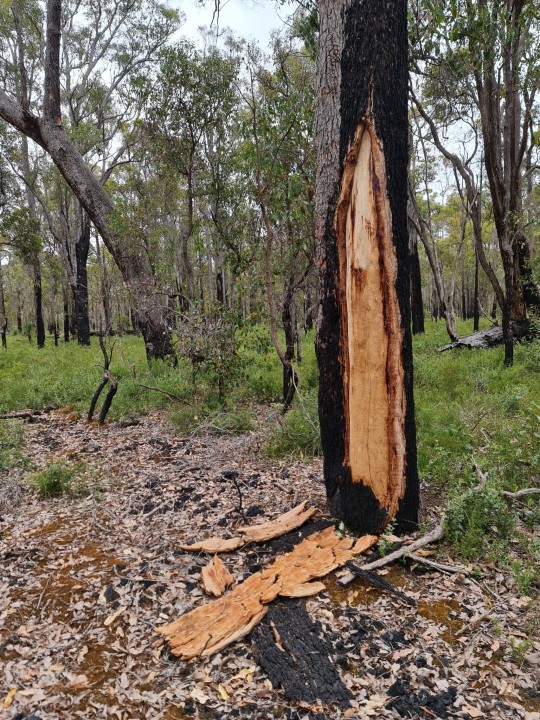
The beginning of a blackbutt hollow on a marri tree (Corymbia calophylla).
When fire burns severely it can sometimes 'kill' the bark, even on hardy fire-adapted Eucalypts. This causes a loss of integrity and will fall away, like we can see here. Now the trunk is exposed without bark on this side. The tree will generate another bark layer, but until it does, it will be subject to insect attack and other issues.
These blackbutts are now more susceptible to damage from fire. Over the years as repeated fires effect the area, the hollow will become bigger, and fire can get 'into' the tree rather than just burning the bark, and they can burn from the inside out. We call these trees "chimneys." You will see what looks to be a normal, un-burnt tree, but it's billowing smoke out the top - because it's burning internally.
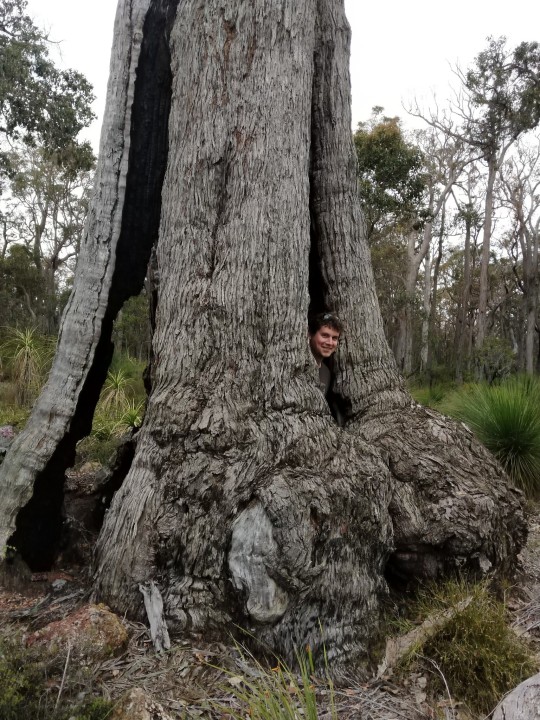
This is a giant marri blackbutt is completely burned out underneath (6'3" friend for scale)!
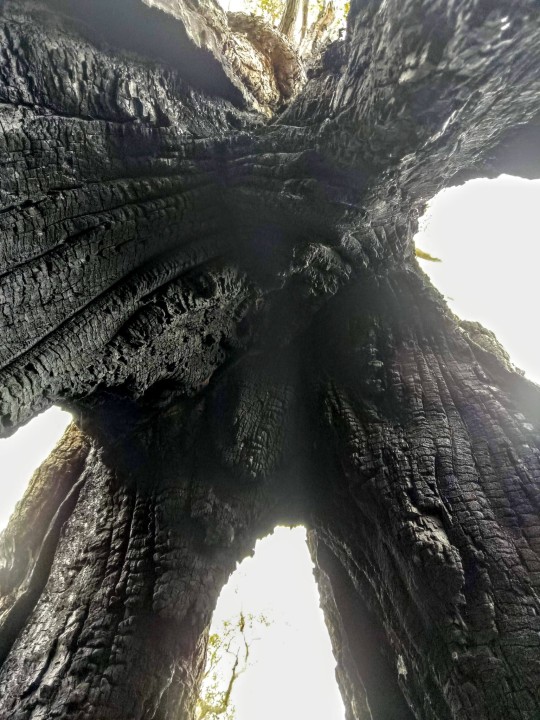
From beneath. By the way, this tree is still alive!
📸 @fire-ecology
#fire#fire ecology#plants#botany#plant science#ecology#wildfire#australia#bushfire#op#eucalyptus#eucalypt
185 notes
·
View notes
Text
i love you moss i love you liverworts i love you hornworts i love you nonvascular plants i love you bryophytes
#botany#plant biology#plant science#plantblr#botanist#gardenblr#plantcore#plants#garden#gardencore#gardeners on tumblr#plant mom#studyblr#bryology#bryophyte#bryophytes#moss#mosscore#liverwort#hornwort
626 notes
·
View notes
Photo


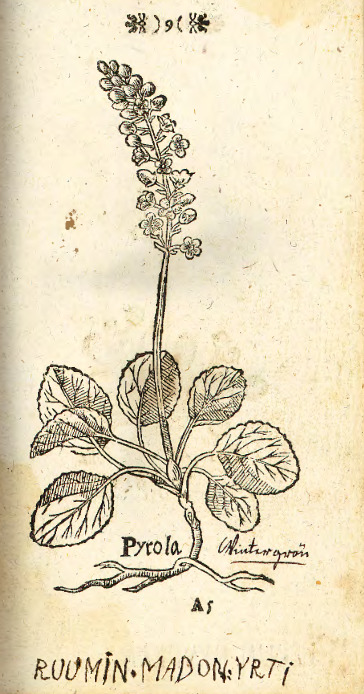


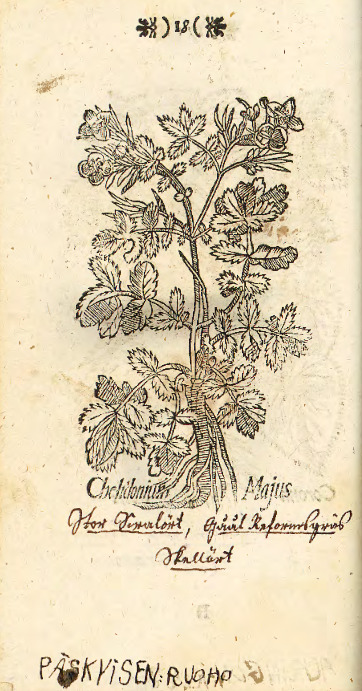


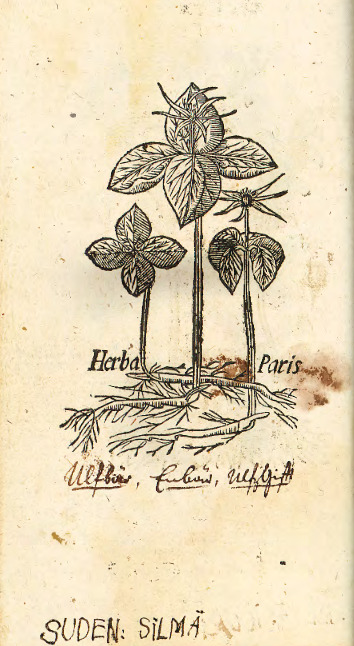

Icones novae in usum selectae, et catalogo plantarum promiscue appensae (1683)
#botany#illustrations#17th century#suomi#finland#flowers#words#finnish language#art#catalog#plant science#biology#*
504 notes
·
View notes
Text
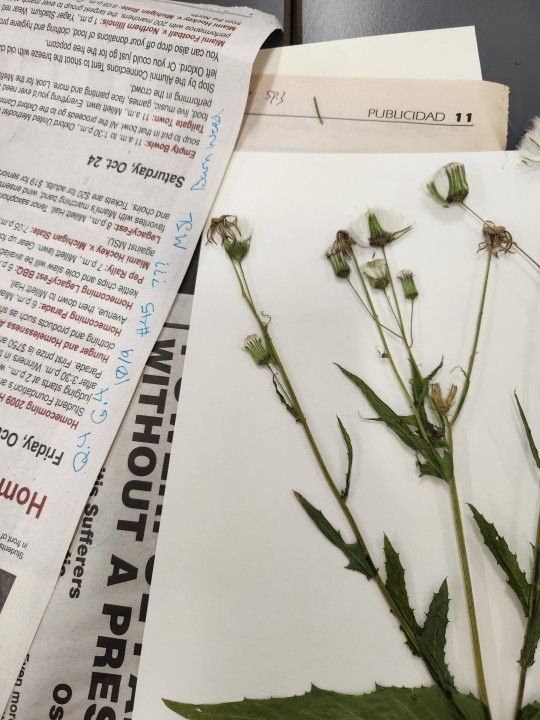

some herbarium specimens I've been working on :)
34 notes
·
View notes
Text
Mod 3: Gymnosperms
Pinus Needle T.S.
It is circular in outline in P. monophylla, semicircular in P. sylvestris and triangular in P. longifolia, P. roxburghii, etc.
Outermost layer is epidermis, which consists of thick-walled cells. It is covered by a very strong cuticle.
Many sunken stomata are present on the epidermis.
Each stomata opens internally into a substomatal cavity and externally into a respiratory cavity or vestibule.
Below the epidermis are present a few layers of thick-walled sclerenchymatous hypodermis. It is well developed at ridges
In between the hypodermis and endodermis is present the mesophyll tissue.
Cells of the mesophyll are polygonal and filled with chloroplasts. Many peg-like infoldings of cellulose also arise from the inner side of the wall of mesophyll cells.
Few resin canals are present in the mesophyll, adjoining the hypodermis. Their number is variable but generally they are two in number.
Endodermis is single-layered with barrel-shaped cells and clear casparian strips.
Pericycle is multilayered and consists of mainly parenchymatous cells and some sclerenchymatous cells forming T-shaped girder, which separates two vascular bundles. Transfusion tissue consists of tracheidial cells.
Two conjoint and collateral vascular bundles are present in the center. These are closed but cambium may also be present in the sections passing through the base of the needle.
Xylem lies towards the angular side and the phloem towards the convex side of the needle.
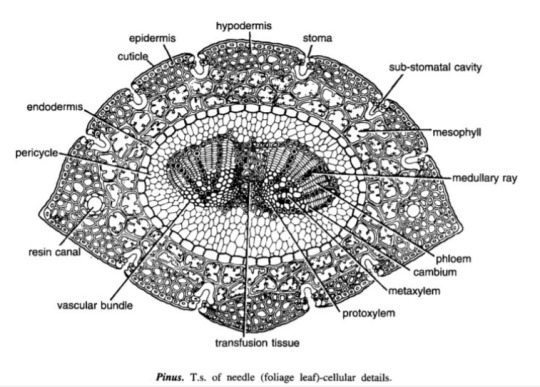
Idk where to find xeric nature info
Williamsoniaceae
Occurrence of Williamsonia
Williamsonia belongs to family Williamsoniaceae of Bennettiales.
It has been reported from Upper Triassic period but was more abundant in Jurassic.
This was earlier discovered under the name Zamia gigas by Willamson in 1870 but has now been named as Williamsonia.
Professor Birbal Sanhi (1932) described W. sewardiana from Rajmahal Hills of Bihar (India).
External Features of Williamsonia
Williamsonia resembled Cycas in appearance, but its best-knows species is W. sewardiana. The plant had an upright, branched, and stout stem covered by persistent leaf bases.
A terminal crown of pinnately compound leaves was present. For the stem genus Bucklandia, Sharma (1991) opined that features of leaf bases such as their shape, size and arrangement pattern are of taxonomic significance.
He observed that leaves in Williamsoniaceae show syndetocheilic stomata with rachis possessing collateral endarch vascular bundles.

Reproduction in Williamsonia
The fructifications of Williamsonia were large and attained a diameter of about 12 cm.
They were borne on a peduncle.
Many spirally arranged bracts were present around the base of the floral axis.
In W. gigas the cones were present among the crown of leaf bases while in W. sewardinia they were present on the short lateral branches.
Williamsonia plants were unisexual.
Female Flower
The female 'cones' of W. gigas and W. sewardiana have been investigated in detail. Instead of 'strobili' or 'cones', Sporne (1965) proposed to use the term 'flower'.
The conical receptacle was surrounded by many perianth-like bracts. The ovules were stalked.
The apex of the receptacle was naked and sterile. The nucellus was surrounded by a single vascularize integument, which was fused with the nucellus. The nucellus had a well-marked beak and a pollen chamber. In young ovules the micropylar canal was long and narrow.
In mature ovules, the canal widened because of the formation of nucellar plug and disappearance of interlocking cells. In the apical part of the endosperm, Sharma (1979) observed 2 or more archegonia.

Male Flower
Male flowers consisted of a whorl of microsporophyll's which were united to form a more or less cuplike structure. In majority of the investigates species the sporophylls were un-branched but in some species they were also pinnately branched.
Sitholey and Bose discovered W. santalensis from Upper Gondwana, and observed that microsporophyll's in the species were bifid.
One of the branches of microsporophyll was fertile while the other was sterile. The fertile part has finger-like structures called synangia. Each synangium had two rows of chambers enclosing microsporangia.
The fertile branch of the bifid sporophyll possessed many purse-like capsules, in each of which there were present many monocolpate pollen grains.

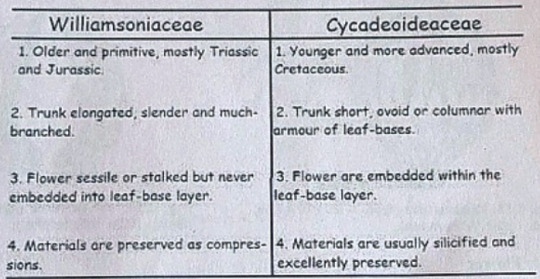
Cycadeoideaceae
Classification:
Division - Cycadeoidophyta
Order - Cycadeoideales
Family - Cycadeoideaceae
Genus - Cycadeoidea
Introduction:
Cycadeoidea is the only genus of family Cycadeoidaceae, represented by thirty species. They are entirely extinct and resemble cycads in the outward stumpy appearance of trunk and an apical crown of pinnate compound leaves. This fossil group of plants flourished during the Triassic to Cretaceous periods of the Mesozoic era. They are reported from various places in the world, in India the Cycadeoidales are found in Rajmahal Hills in Bihar. The petrified trunks of C. entrusca are the oldest fossil ever collected by man.
External Features:
The genus Cycadeoidea had a short, branched, or unbranched spherical, conical, or irregular trunk. The diameter of the trunk is 50cm and the highest rarely reached a meter except in C. jenneyana, it attended the height of several meters. These trunks are covered by rhomboidal leaf bases having multicellular hairs in between. Crown of 10ft long pinnate compound leaves are present at the top.
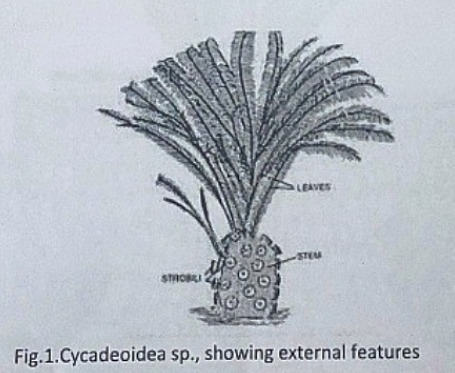
Anatomy of Stem:
The transverse section of the stem shows roughly a circular outline. The epidermis is not very distinct due to the presence of heavy armor of leaf bases. The cortex is parenchymatous and traversed by mucilage canals and numerous leaf traces. The primary vascular structure consists of a ring of endarch, collateral, conjoint, and open vascular bundles encircling the pith. Pith is wide and parenchymatous. A ray-like extension passes between the vascular bundles that make their appearance discrete.
There is a cambium ring with a thin zone of secondary wood. The secondary wood encircles the primary xylem and consists of tracheids with scalariform and bordered pits. The secondary medullary rays traverse the secondary xylem and secondary phloem.
The C-shaped leaf traces arise singly from the primary vascular strand and entering the cortex divided into several masarch strands and enters straight into the leaf.
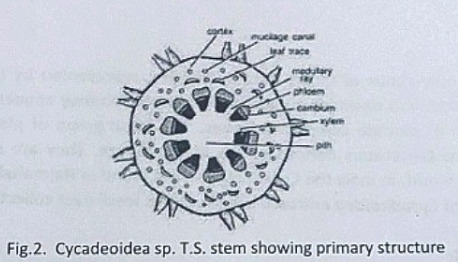
Anatomy of Leaf:
The pinnules show xerophilous structure. The upper and lower epidermis is heavily cutinized and thick walled. The mesophyll cells are distinguished into palisade and spongy parenchyma. The vascular bundles are mesarch and surrounded by bundle sheath.
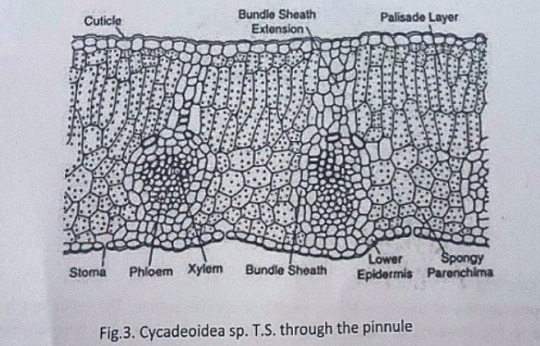
Reproduction:
The reproductive structure is represented by flowers. In most of the species, the flowers are bisexual and arise in the axil of each leaf.
Structure of Flower:
The flowers are bisporangiate, stalked, and partially sunken in the leaf base armor. Rach such mature flower is 5-10cm in diameter and 10cm long. From the base of such flowers about 100 to 150 hairy bracts arise in close spiral little below the apex. These bracts formed a perianth like structure and protect the megasporangiate and microsporangiate parts of a flower. The microsporophyll or androecium forms a whorl united at the base into a sheath. The megasporophyll or gynaecium consists of numerous stalked ovules born around a central receptacle. Between the ovules, interseminal scales with expanded tips are present. These expanded tips fused to form a continuous surface with pores, through which the micropyle of ovules extended. The vascular supply of flowers consists of many branches from leaf traces.
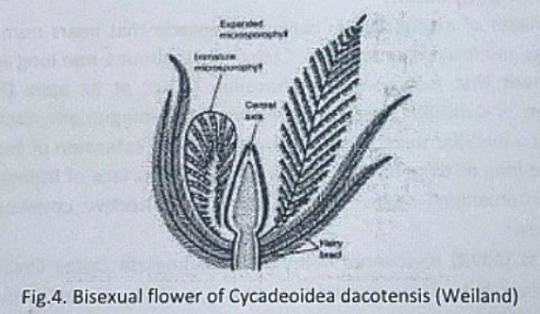
Microsporophyll or Androecium:
The microsporophyll is 10-12cm long, consists of a central rachis bearing numerous pinnae. The pinnae bear two rows of bean-shaped shortly stalked pollen capsules or synangia. These pollen capsules are born on the trabeculae within the fertile region of microsporophyll. A line of dehiscence is also visible at the base of each microsporophyll. This suggest that the entire microsporophyll might have been shed as a unit. The pollen capsule or synangia measures about 3.5x2.5mm and its wall is several layers thick, the outer layer made up of palisade like cells, and the inner layer is made up of thin-walled cells followed by a tapetum. The tapetum was not demarcated. A ring of microsporangia arranged around the periphery of each synangium. The microsporangia dehisce longitudinally and release the microspores into the synangial cavity. At maturity, the synangia liberate these microspores outside by an apical opening that splits into two valves. The liberated microspores or pollens are oval, measures up to 68µ that represents the male gametophytes. Pollen grains of Cycadeoidea are multicellular.
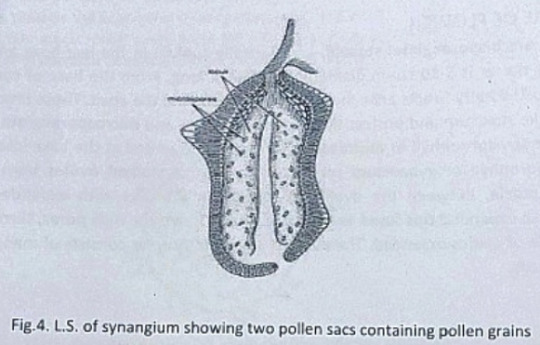
Megasporophyll or Gynoecium
The gynoecium consists of a spherical or conical receptacle that bears numerous stalked orthotropous ovules and interseminal scales. Each ovule is about 1mm long and consists of the single integument that fused with the nucellus except at its apex.
According to Lignier, in C. morieri, nucellus is free from the integument. Each ovule has a pollen chamber and a nucellar beak. This nucellar beak is the extension of the integument. The ovules also have long micropyle, extended from the flat surface of interseminal scales. The fused tips of interseminal scales form an external protective covering or pericarp surrounding the seeds.
Crepet and Delevoryas discovered many of bisporangiate cones from the Cretaceous of black hills. They studied the structure of these ovules in detail. These ovules are urn-shaped and resemble with the ovules of C. wellsii. According to them the micropyle of these ovules are funnel-shaped due to the constriction below the flaring. The inner wall of the micropyle is lined with large cells, considered to be epidermal cells. The integument has three distinct layers. The outer fleshy layer of radially elongated cells, the middle stony layer made up of thick-walled cells, and the inner layer is fleshy.
The young nucellus is made up of thin-walled cells. The cells at the micropylar end are much elongated (80µ long) in comparison to the cells of the chalazal end. The cell at the nucellar tip is pointed up tp whereas cells on either side are bend outward to give the nucellus a distinct shape.
Crepet and Delevoryas reported a linear tetrad or row of three cells in the center of the nucellus.
The seeds are somewhat elongated or oval and possessed two cotyledons.

#exam season#send help#biology#notes#science#botany#gymnosperms#pines#pine trees#pine needles#plants#plant science#plant biology#nature#long post
8 notes
·
View notes
Text
Remember kids, many companies who are trying to ‘help’ with the obesity epidemic are payed off by major sugar companies; such as Nestle, Hershey, Mars, General Mills, etc; to say that lipid-fatty foods are the ones causing the epidemic.
While just like anything a heavy amount of fatty foods is not good for you, simple sugars that are pumped into the foods and drinks meant for people and especially children, are way worse for people.
The idea that a diet should contain more Carbs than proteins, dairies, and fats is what causes mass obesity especially within children, tooth decay, gum decay, strokes and chronic heart conditions.
A healthy diet is mainly protein, vegetables, fruits, with limited carbs. There’s a reason once humans started mass farming of rice, wheat, and rye we also saw all these conditions appear.
This isn’t just American consumerism, this is world wide. Even if people talk about how Europe doesn’t have as much sugar in their foods, candy and chocolate companies dominate.
And by allowing these companies to continue, we see an increase of human rights abuses (especially Nestle in Africa) and monopolization.
Nestle is trying to monopolize water, stealing it from reservoirs from Africa and selling it back to the people at extreme mark ups. They’re distilling of this water is leaving these countries with no other option than to by or drink contaminated water.
Coca-Cola is Mexico while yes does not use corn-syrup (one of the most unhealthy inventions by mankind) still holds a monopoly over entire Mexican states. They take the water for their bottling plants leaving people to have to buy Coca-Cola as a way to not die of thirst. This is why Mexico has some of the highest tooth decay rates and childhood obesity rates in the world.
And if you’re the type of person to blame this on GMO’s you don’t know what you’re talking about. All human agriculture is genetically modified that’s how we have most fruits especially citrus plants. But we have grown these plants to have an exuberant increase in sugar to the point that zoos have to stop giving things like apples and bananas to their animals because they’re getting cavities and dying of obesity related heart conditions.
The reason nobody does anything about this is because sugar companies are the biggest companies in the world. They use fake rivalries (such as Pepsi Co. Vs Coca-Cola, Hershey Vs Mars, etc) to make you buy more products and fuel them. Almost all companies are owned by these major brands.
#obesity#sugar#science#plant science#companies#politic#politics#political#sugar industry#monopolies#capitalism#obesity epidemic
7 notes
·
View notes
Photo

Pear illustrations from Pomologia : dat is, beschryvingen en afbeeldingen van de beste soorten van appels en peeren, welke in Neder- en Hoog-Duitsland, Frankryk, Engelland en elders geagt zyn, en tot dien einde gecultiveert worden. Johann Hermann Knoop. 1758. https://newcatalog.library.cornell.edu/catalog/357585
#fruit#fruits#pear#pears#fruit culture#fruit illustration#fruit textbook#pear illustration#vintage textbook#vintage graphic#vintage illustration#1700's art#horticulture#botany#plant science#food science#food#pear tree#apples#pomologia#german book#german textbook
150 notes
·
View notes
Text




reproductive structures
#plant#plant science#microscope#microscopic#botany#horticulture#biology#science#agriculture#cryptid#cryptidcore
12 notes
·
View notes
Text
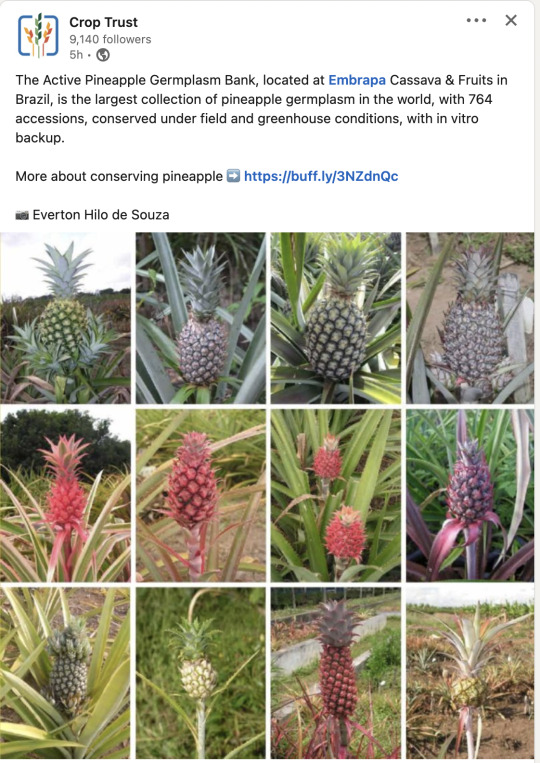
The surprising diversity of Pineapples (Ananas comosus).
The Active Pineapple Germplasm Bank (Pineapple AGB) of Embrapa Cassava & Fruits (Embrapa/ CNPMF) has more than 700 accessions under field conditions. As backups, there are copies kept in a greenhouse, with one or two plants per accession, cultivated in plastic pots with commercial substrate. An in vitro gene bank was established in 2003, and during the past few years, several studies have been carried out to improve the in vitro conservation protocol. Currently, about 60% of the AGB’s accessions are preserved by this protocol. Another conservation strategy used is cryopreservation of shoot tips and pollen grains, with well-defined methods. One of the most significant advances in the pineapple germplasm conservation has been the implementation of a quality control system, which enabled to define standard operation procedures (SOP) towards a more efficient and safer germplasm conservation.
Source:
Vidigal Souza, Fernanda & Souza, Everton & Aud, Fabiana & Costa, Eva & Silva, Paulo & Andrade, Eduardo & Rebouças, Danilo & Andrade, Danilo & Sousa, Andressa & Pugas, Carlos & Rebouças, Érica & França, Beatriz & França, Rivã. (2022). Advances in the conservation of pineapple genetic resources at Embrapa Cassava and Fruits. 28. 28-33.
#katia plant scientist#botany#plant biology#plant science#plants#fruit#pineapple#pineapples#biodiversity#agriculture#conservation#genetic diversity#sustainable agriculture#tropical plants#science#biology
312 notes
·
View notes
Text



Marimo under 100x and 200x. 🔬
40 notes
·
View notes
Text
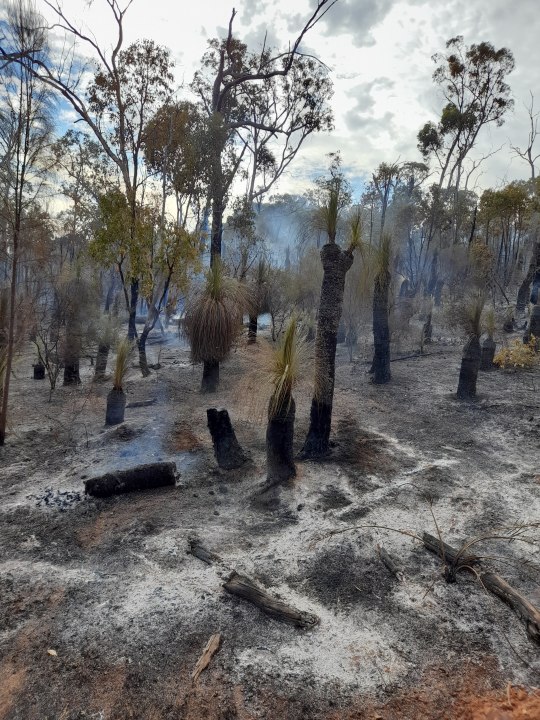
The fire

The regeneration - only 18 months later!
The lush green is the species Acacia pulchella, an obligate seeder, which is a plant that is killed by fire and must recruit via seeds - in this case, lying dormant in the soil seed bank. It requires high soil heating temperatures from fire (~80-120°C) to break dormancy and trigger germination. This strategy allows the species to persist in a fire prone environment, and take advantage of the excellent post-fire conditions of increased nutrients from burned biomass, increased light availability, and reduced competition.
#fire ecology#plants#ecology#fire#wildfire#bushfire#botany#australia#plant science#recovery#op#fire-ecology
180 notes
·
View notes
Text
GOT APPROVED FOR GRADUATION W MY HORTICULTURAL SCIENCE CERTIFICATION TODAYYYYYY LETS GO LADS 1/4 DEGREES DOWN
43 notes
·
View notes
Photo

[ID: a blurry photo of a small white bunny jumping in mid-air inside. below is text reading “oh yeah woo yeah” repeated many times. around the bunny is white text in all caps, reading “I love phototropism / I love auxin”. end ID}
me when my plants grow towards the light and i can rotate them the opposite way to make them more upright
31 notes
·
View notes
Text
What would cure me right now would be to find a still updating family plant quiz with more than 10 pictures per category
And also you can choose which families to include in the tests. Oh, and you get to decide if they show you fresh samples, pressed ones or both.
I'm not asking for much I think
13 notes
·
View notes